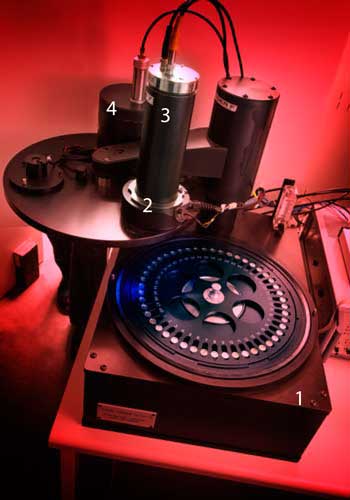Dating of Homo Sapiens findings in Morocco has been carried out by performing measurements using a luminescence instrument developed by DTU.
Since the beginning of the 1960s, fossils and stone tools have resurfaced at the excavation site of Jebel Irhoud, which is found in an old mine located approximately 100 km west of Marrakesh, Morocco. The findings proved to be relics of Homo Sapiens and was at the time assessed to be approximately 160,000 years old, which was well-attuned to the earlier theory about the origin of mankind from East Africa approximately 200,000 years ago.
But now, history has been rewritten.
In 2004, researchers from Max Planck Institute resumed the archaeological excavations in Morocco and located more fossil relics.
The findings are sensational as they reveal the oldest dating of Homo sapiens, so far at no less than 300,000 years. Also, the history of the fossils from the 1960s has now been rewritten. According to recent analyses, these findings are 350,000-280,000 years old, which is twice the original assessment. In the blink of an eye, our species aged 100,000 years, and Morocco’s geographical coordinates also challenges the assumption that life began in East Africa.
The sensational findings were published in two articles in the scientific journal Nature in June 2017. Read one of the articles: 'The age of hominin fossils from Jebel Irhoud, Morocco, and the origins of the Middle Stone Age'.
Age revealed by light particles
The new knowledge has been emerged thanks to a DTU-developed instrument, called the Risø TL/OSL reader.
TL is an abbreviation of Thermo Luminescence and OSL is an abbreviation of Optically Stimulated Luminescence, and the methods can be used e.g. to assess when a grain of sand last saw the light of day. Luminescence, or emission of light, is a characteristic of certain crystalline materials such as quartz and feldspar (i.e. sand and stone). Emission of light takes place when the materials are submitted to either heat (TL) or light (OSL). The emission of light from the materials, however, is not strong enough for the human eye to see, but it is detectable with the TL/OSL reader. When the luminescence signal of a certain material is known, is it possible to determine when e.g. a flint axe was buried.
Luminescence dating is an important tool in the work of mapping human development, as the method can be used for age determination up to approximately 500,000 years. In comparison, carbon-14 dating can only be used for age determination up to approximately 50,000 years back.
Export success
The first Risø TL/OSL reader was made in 1982, and until 2017, DTU Nutech had exported more than 400 instruments. Annual sales reach approximately 20 instruments, and the Risø TL/OSL reader can be found in laboratories in more than 40 countries.
Today, approximately 10 employees at DTU Nutech are engaged in developing, manufacturing and selling the instrument. DTU Nutech maintains close ties with international researchers who visit Risø to carry out TL/OSL dating research or to receive instruction in using the reader.
|

Photo: Mikal Schlosser
|
1. Merry-go-round
The materials that are to be examined are placed in a ‘sample wheel’ which rotates around inside the TL/OSL reader. Here, the samples are exposed to a cycle of operations: heating, lighting, and exposure to beta particles. In a standard dating of a mineral, the wheel carrying the materials runs through approximately 12 such cycles. Each sample wheel has room for 48 samples, and each sample can consist of a single or up to several thousand grains of sand.
2. Detection and stimulation head
Light sources used for optical stimulation of the samples are usually blue, green, and infrared LEDs or lasers. The luminescence—that is the light, which grains of sand emit after having been (optically) stimulated—is so weak that a number of filters are required to measure it accurately it. It is critical to filter away the stimulation light from the detection, as it is about 1018 times stronger than the actual luminescence.
3. PM tube or EMCCD camera
The released luminescence is measured by either a so-called PM tube (Photomultiplier tube) or an EMCCD camera (Electron Multiplying Charge Coupled Device). In 2014, DTU Nutech was the first to deliver a fully functional camera to the TL/OSL reader.
4. Radioactive source
Irradiation of the samples is a precondition for being able to date them. Based on the luminescence (i.e. the light the material emits during stimulation) signal intensity, researchers obtain a precise age determination of the samples. The source is typically a beta source (strontium), but it is also possible to install other sources in the TL/OSL reader, for example, an X-ray source or an alfa source.
|